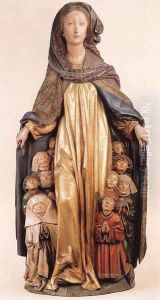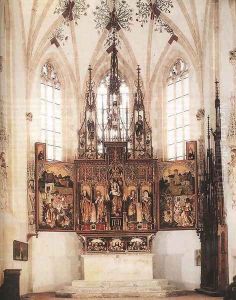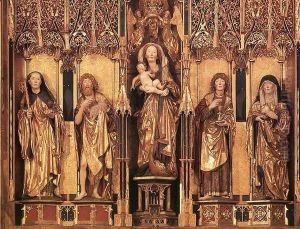Michael Erhart Paintings
Michael Erhart was a notable German late Gothic sculptor active in Ulm, a city with a significant artistic community in the late Middle Ages. Although the exact dates of his birth and death are not firmly established, it is generally believed he was born around 1440-1445 and was active until at least 1522. Erhart emerged in the historical record as part of a thriving art scene in Ulm, contributing significantly to the development of sculpture in Southern Germany during his lifetime.
Erhart was part of a family of artists, which likely played a crucial role in his artistic development and career. His work is characterized by a deep understanding of human emotion, rendered in wood with remarkable skill and sensitivity. This ability to convey depth of feeling and individuality in his figures suggests a profound observation of human nature and an exceptional technical mastery.
He is best known for his religious sculptures, including altarpieces, figures of saints, and scenes from the life of Christ. His works were primarily intended for churches and private devotion, reflecting the intense piety of the period. One of his most famous works is the Saint Anne Selbdritt, which showcases his skill in creating complex, multi-figure compositions that combine grandeur with intimate detail. This piece, like many of his works, demonstrates Erhart's talent in using facial expressions and body language to convey a narrative and evoke emotional responses from the viewer.
Michael Erhart's contributions to the art world were part of the larger Late Gothic movement, which was marked by a transition towards more naturalistic forms and expressions. His sculptures stand as a testament to the artistic achievements of the period, bridging the gap between the medieval and the Renaissance. Despite the scarcity of records about his life, Erhart's surviving works continue to be celebrated for their beauty, craftsmanship, and emotional depth, securing his place in the history of art as a master sculptor of the Late Gothic era.


